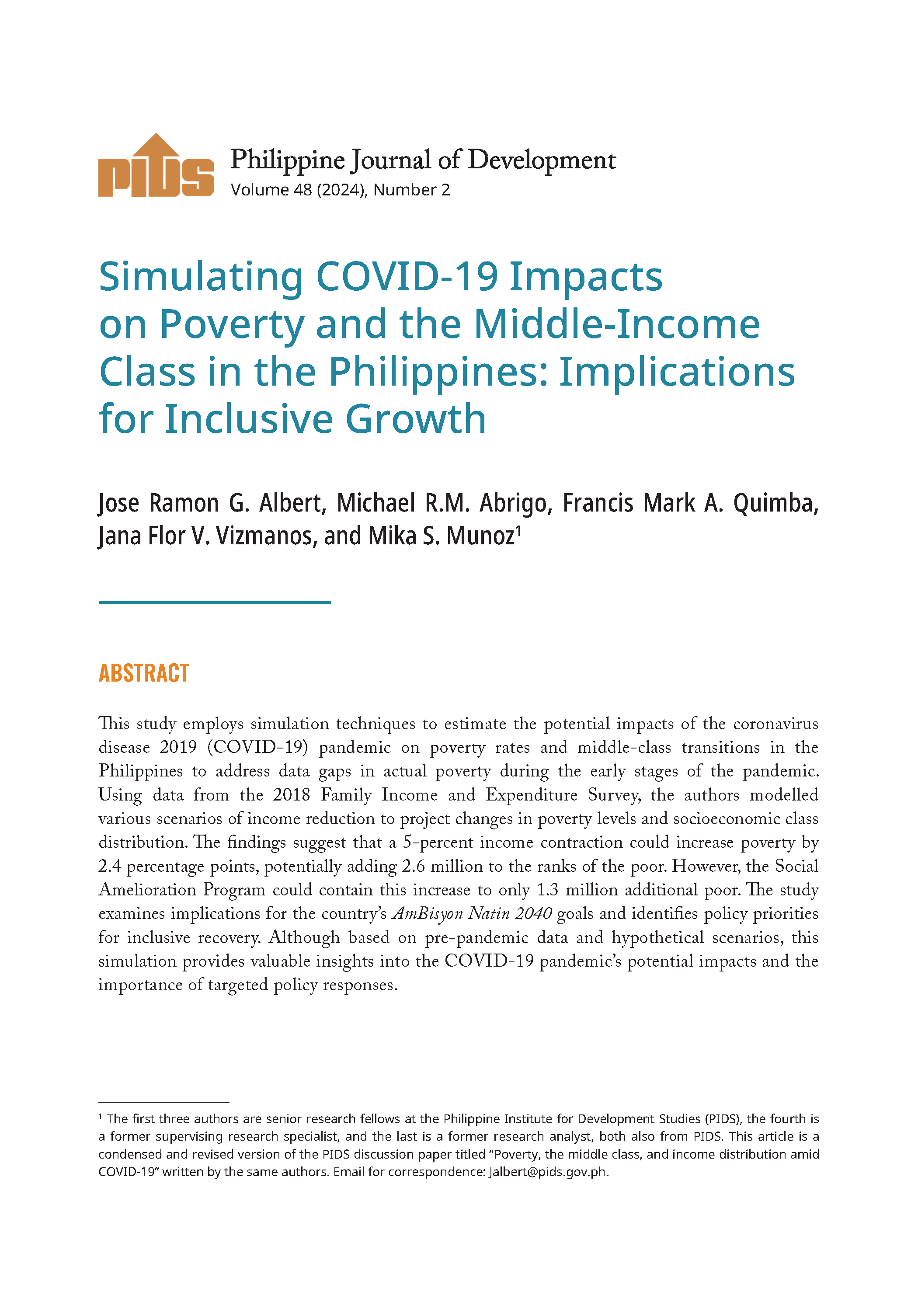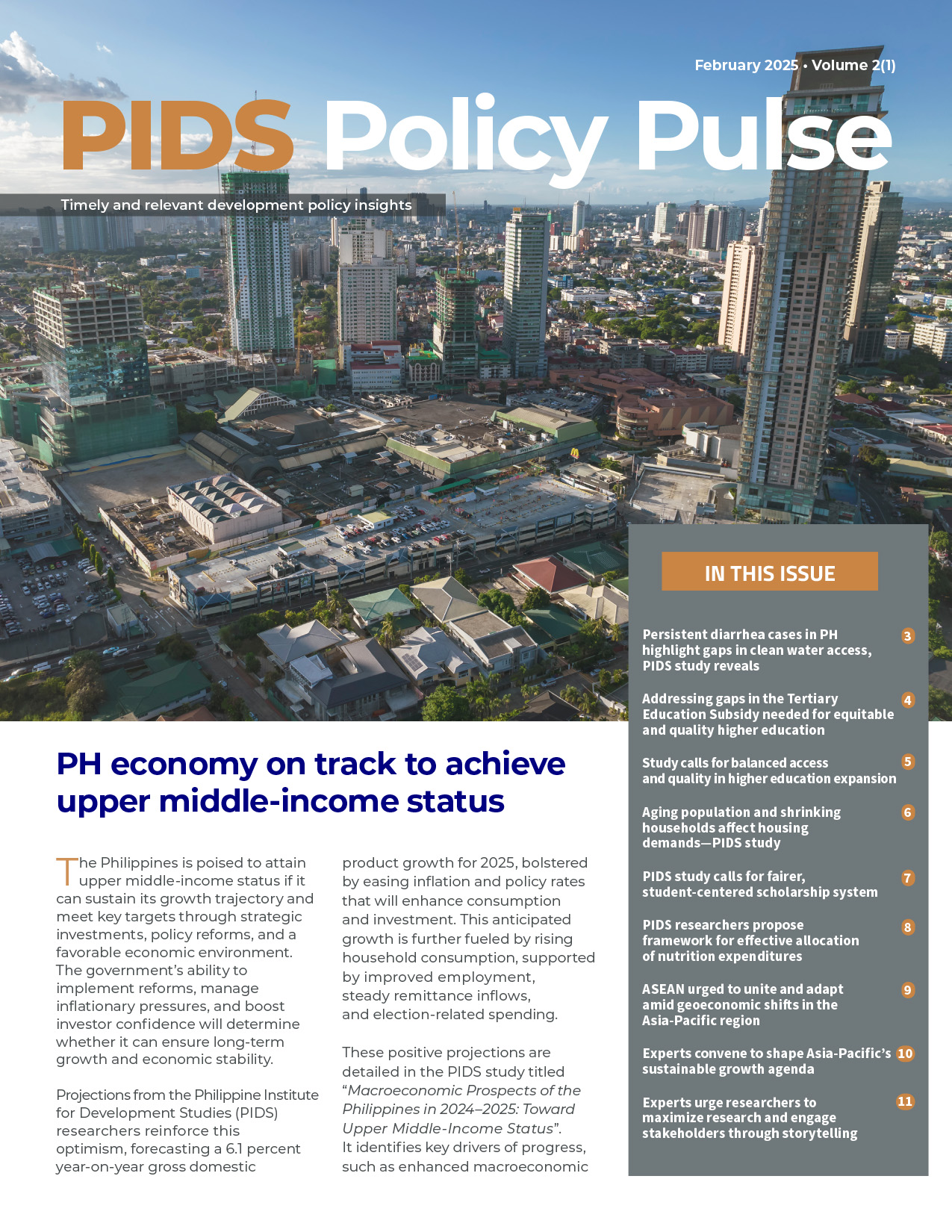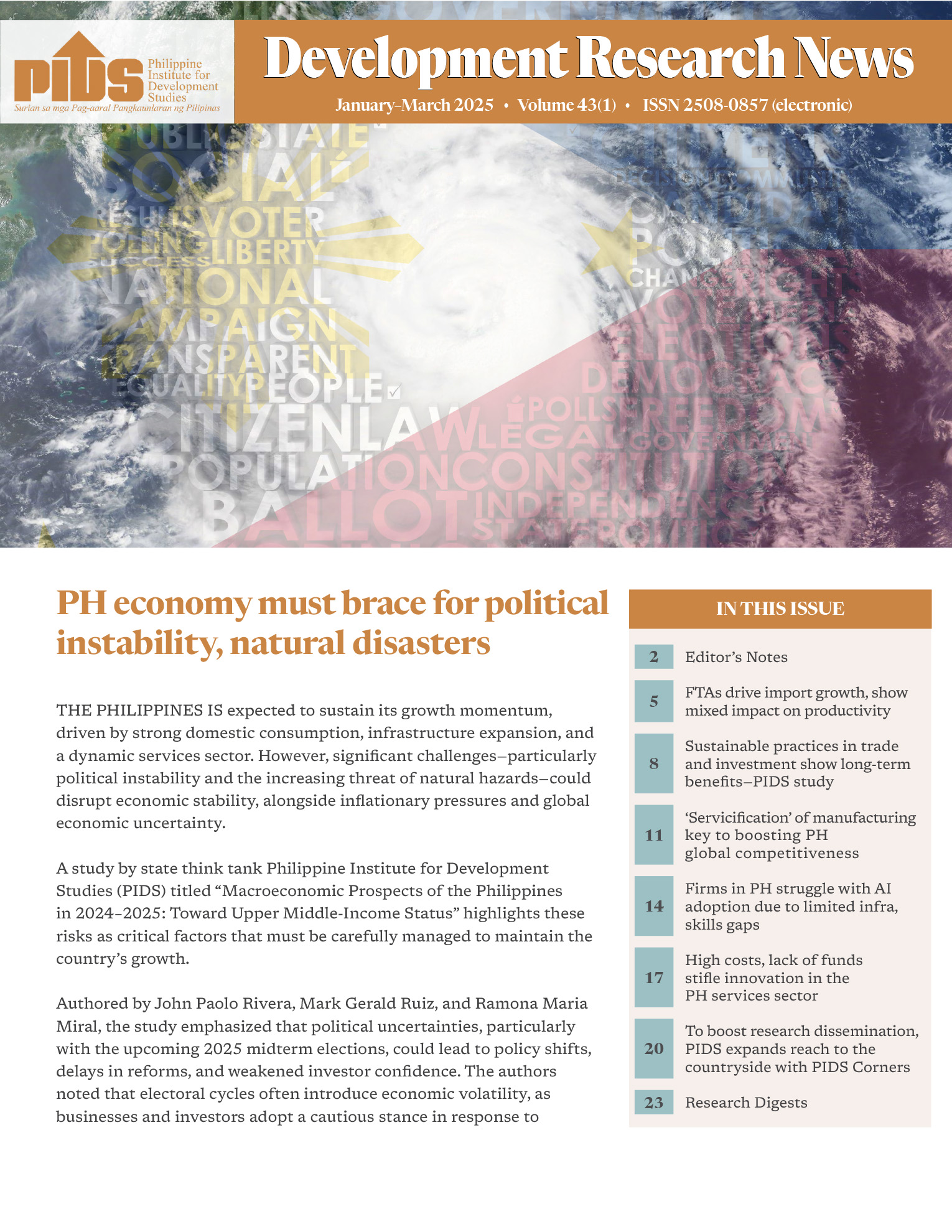The majority of Filipinos who harbor the desire of migrating are looking for an average compensation of only P30,000 or less a month, according to the Philippine Institute for Development Studies (PIDS).
In a study titled “A Probe into the Filipino Migration Culture: What Is There to Learn for Policy Intervention?” PIDS Supervising Research Specialist Aubrey D. Tabuga said about 40 percent of study respondents even said they are willing to receive even less than P20,000 to work as overseas Filipino workers (OFWs).
When asked about the minimum amount of monthly pay or wage that they seek in overseas work, Tabuga said the respondents replied they expect to receive compensation from as low as P3,000 to around P280,000 or $67 to $6,000.
“The key motivation for wanting to migrate is economic in nature. Seven out of the 10 aspirants cited their need to improve their living condition as the main reason for wanting to emigrate,” Tabuga said.
These economic reasons are based on the underlying dissatisfaction of workers with their current incomes or salaries. The majority, or 50.2 percent, of respondents also expressed discontent with their incomes.
Further, the study found 43 percent of migration aspirants do not feel satisfied with their current living condition. Only around 30 percent of the non-aspirants expressed the same dissatisfaction.
The findings also showed that the majority, or 55 percent, of the prospective migrants expressed dissatisfaction at varying levels; only over a third or 36 percent of those who opt to stay expressed the same sentiment.
Tabuga also said that when asked about whether their household’s livelihood improved in the past five years, the proportion of those who expressed dissatisfaction in both groups is comparable, but slightly higher for those wanting to migrate abroad at 34.4 percent than those who do not have any plans at 30.1 percent.
“Given more secure local job opportunities, a non-negligible proportion would opt to stay. More than a quarter, or 27 percent, of those with migration plans reported that they would change their mind if only there were decent jobs around available for them,” Tabuga said.
“If people do have a choice, they would rather stay and be with their families and loved ones. Family-related reason is most commonly cited factor that could make would-be migrants reconsider their migration decisions,” she added.
With this, Tabuga said the government must focus on regional development to widen employment opportunities in far-flung areas in the Philippines.
She added there is a need to consider policies that care for the welfare of retirees, including those that allow migrant workers to prepare for retirement.
Tabuga said some 11 percent of respondents expressed the need to improve their career, while around 10 percent wanted to finance the education of their children and 8 percent wanted to join/reunite with their kin who are working/living abroad.
The rest of the respondents wanted to earn more and save for the future and for retirement at 7 percent; to build or repair their own house, 5 percent; and to see the world, experience life in another country.
“Many Filipino migrant workers spend so many years of their life working abroad. This finding reflects the possibility that households are not able to sustain their standard of living once they return from overseas job, they are then encouraged to back overseas to sustain their lifestyle. They eventually retire in the place of origin but it is not clear whether they have spent enough for retirement or if that is even something that they have considered,” Tabuga said.
Tabuga, likewise, urged the government to undertake a more aggressive information campaign about migration and implement programs on financial literacy not only for current overseas Filipino workers (OFWs) but also those aspiring to work abroad.
She said based on the study, only 3 percent of former OFWs or returnees said they obtained their information from government entities. The rest obtained information from personal and social networks, which could be an indication that the lack or absence of government information on labor migration nationwide, despite the thousands who emigrate daily.
The data collection was carried out through face-to-face interviews of all the 365 households in barangay Camachile, Orion, in the province of Bataan, a migrant-sending village in the Philippines.
The main criteria for selecting the area of study are being rural, having high migration prevalence based on data from the community-based monitoring system database of the municipality and accessibility from the capital for feasibility of field research.
The personal interviews conducted on all 365 households in the study area yield a dataset of 1,555 individuals, including minors.
The typical household’s per capita income is P59,990, or $1,421. The standard deviation is P87,625, or $2,075. Except for one, all the households have access to electricity.
Meanwhile, among the 1.4 million land-based Filipino migrants in 2015, around one-third are new-hires; while the remaining two-thirds consist of rehires.
The bulk of OFWs deployed in 2015 went to the Middle East (63 percent) and various Asian countries (28 percent). The rest (9 percent) went to Europe, the Americas, Africa and others. The top 3 country destinations of Filipino workers are Saudi Arabia (406,089), the United Arab Emirates (227,076) and Singapore (141,453).












